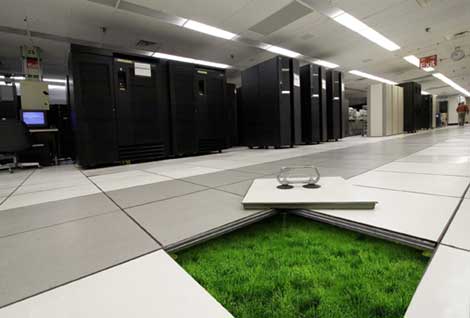NRDC: Multi-Tenant Data Centers Need To Play Bigger Energy Efficiency RoleNRDC: Multi-Tenant Data Centers Need To Play Bigger Energy Efficiency Role
Poor server utilization and misaligned incentives within the multi-tenant data center market are identified as root problems with data center energy efficiency.
August 26, 2014

Data centers are among the fastest growing users of electricity in the U.S. consuming an estimated 91 billion kilowatt-hours of electricity in 2013. Annual consumption is projected to increase by roughly 47 billion kilowatt-hours by 2020.
And while the industry has made progress in cutting energy waste, it still holds many wasteful practices, according to a Natural Resources Defense Council (NRDC) report.
"Data centers have an important role to play in making the economy more efficient," said Pierre Delforge, NRDC’s director of high-tech energy efficiency. "We see great leaders in the cloud space, but we need the whole industry to participate." Delforge believes small, medium, corporate and multi-tenant data centers are still squandering huge amounts of energy and that the social responsibility extends to all data centers.
The two big hurdles to better energy efficiency are under-utilization of servers and misalignment of incentives, the latter particularly found within multi-tenant facilities. Incentives need alignment between those who make decisions affecting efficiency and those who pay the energy bills. The NRDC recommends steps to accelerate the pace and scale of energy savings.
Industry needs to better align incentives
While multi-tenant facilities are seen as more energy efficient than server closets, the NRDC says the model creates problems when it comes to lining up incentives, and doesn't do enough to incentivize better monitoring and metrics.
"This is an interesting area because it hasn’t had the awareness from a public perspective," said Delforge. "People still think of traditional data centers. The efficiency debate hasn’t been considered as much in the multi-tenant space. This sector is growing rapidly, faster than the rest of the market. It presents both opportunities and barriers. When you move from onsite to colocation, you’re leveraging economies of scale and expertise and gain energy efficiency. However, in the long term it adds a layer of misaligned incentives."
There is a division of accountability and incentives within an organization, but the problem is even more acute with multi-tenant facilities. The data center owner pays the electricity bill, while tenants pay for blocks of power regardless of use. Delforge says that because many still bill by power block instead of usage, there isn't enough incentive for customers to be efficient since they'll pay for power regardless of use. Smaller sized customers require individual metering so better energy efficiency has a financial benefit for multi-tenant customers.
Multi-tenant data center contracts reflect the cost of power and cooling, providing little motivation for customers to invest in more efficient equipment. IT purchasers separately specify which equipment tenants should buy, adding more misalignment.
In addition to metered billing, another notable suggestion is data center stakeholders should develop a “green lease” contract template to more easily incentivize energy savings.
Recommendations include better transparency, higher server utilization
The report finds that the typical computer server operates at no more than 12 to 18 percent of capacity and up to 30 percent of the other servers are "comatose" and no longer needed. Projects end and business processes change, but these servers remain plugged in and continue to draw power. Better monitoring means better information and metrics on entire data center operations, which can in turn be used to better line up incentives all along the ownership chain.
The NRDC suggests that the industry adopts a simple metric such as average utilization of the server central processing unit(s) (CPU) to help resolve the underutilization problem.
"I'd like to see a more sophisticated metric adopted eventually, but it lacks simplicity for now," said Delforge. "Let’s start with something simple that will provide a good indicator to start with. CPU utilization is not perfect, as it might be misleading depending on the applications and doesn't account for other factors such as IO, but it's a starting point."
Industry groups like the Green Grid have been developing metrics for years. Other metrics like Power Usage Effectiveness (PUE) are already used heavily. However, the call is for a simple, universal server utilization metric.
Other causes of wasted energy identified include:
Installing equipment to handle peak load and underutilizing equipment for the majority of the time
Limited deployment of virtualization. Virtualization reduces the number of servers.
Shortsighted procurement practices: More efficient servers might have a higher initial price tag, but are significantly cheaper over the course of its lifetime
Energy efficiency is low priority for multi-tenant facility customers: A focus on security, reliability and uptime often undermines interest in energy efficiency
About the Author
You May Also Like







